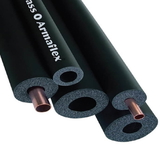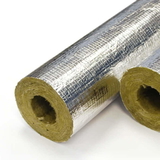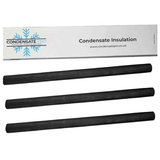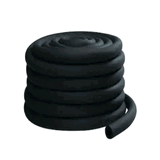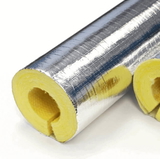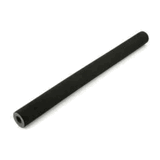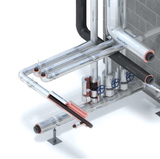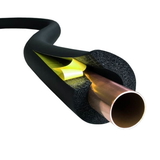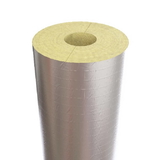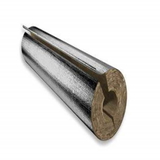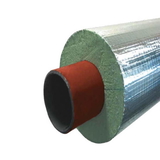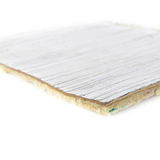- Blogs
- Why you need pipe insulation?
Why you need pipe insulation?
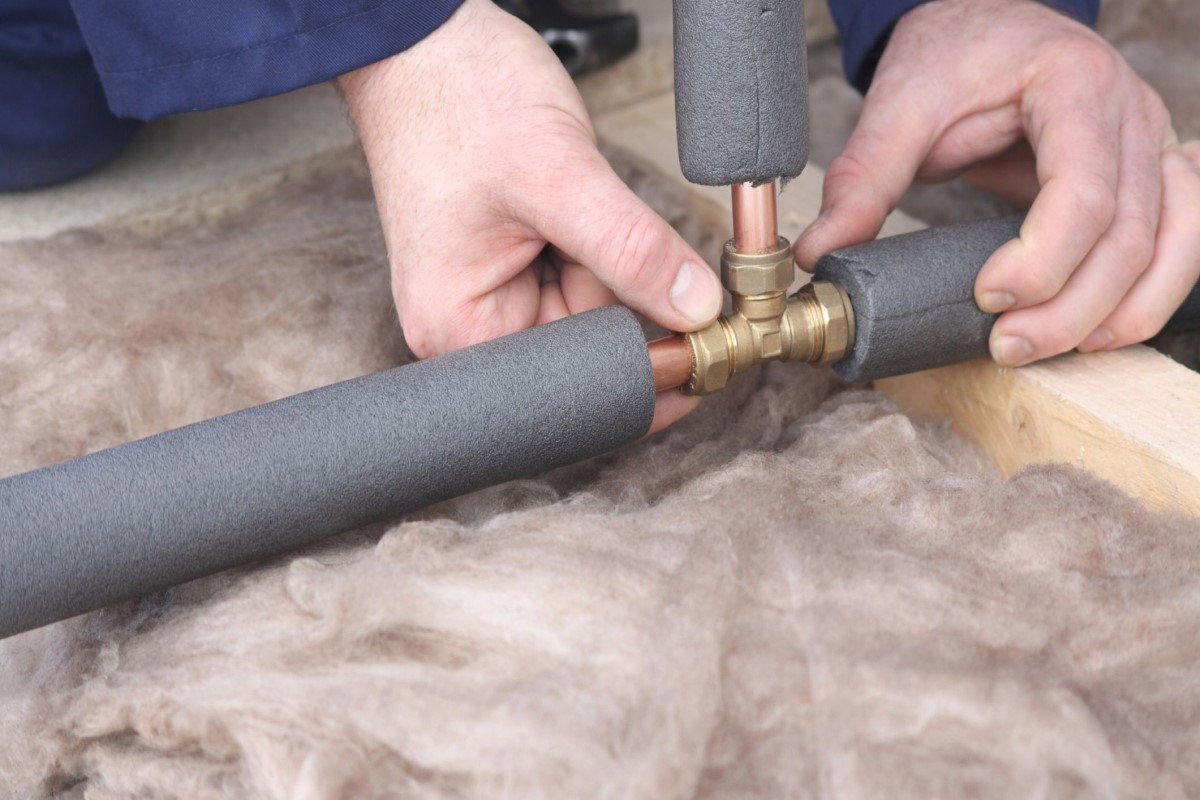
If you know anything about the utilities in a building, you will understand that any property with sinks, toilets, showers has a network of water pipelines running through it.
Insulating your pipes is easy, relatively cheap and will pay dividends over the years.
There are numerous advantages to lag pipes which is why we suggest incorporating them as part of your property maintenance strategy.
Top reasons you should be lagging your water pipelines:
Insulate pipes to prevent burst plumbing
If you have ever dealt with a burst pipe in the past, you will be aware of the dangers involved. When pipes freeze, they are more likely to burst.
When the water in pipes is allowed to freeze, the water inside them begins to expand beyond the capability of the pipe material itself, be it copper, steel or plastic, being unable to resist the forces being placed upon it. The result is a burst pipe and a hell of a mess and a big insurance claim.
In order to protect these pipes as much as possible, and to avoid expensive damage, pipe lagging is used. By insulating your pipes, you cut down or eliminate the possibility of pipe freezing and therefore prevent this costly affair from occurring.
Pipe insulation helps with energy saving:
Energy conservation is something everybody is talking about at the minute. Pipe insulation reduces the amount of heat energy lost or gained by water pipes into the ambient air by preventing heat loss.
Without high-quality insulation, a lot of warmth is lost through the pipes and into cold spaces such as your loft. This means more energy is required to heat the house.
Insulating pipes is a more fiddly job in certain locations of your property, but it brings with it a number of substantial advantages. Once you have insulated your pipes, you can rest assured that your plumbing and heating systems are functioning at their best.
Why you need pipe insulation?
Reduces your carbon footprint:
Pipe insulation is a great investment for homeowners who want to reduce their carbon footprint. It’s a simple and inexpensive way to improve your home's energy efficiency. Most importantly, pipe insulation can help keep the heat in - which can translate into big savings on your heating bill.
Protect against pipe sweating:
Pipe insulation can additionally be utilised to prevent pipe sweating. When cold pipes are present in warmer, humid air, the water vapour condenses externally on the pipe. This produces condensation, which will certainly leak onto the flooring or ceilings below, developing pools as well as damp patches, which can bring about mould as well as rot. Pipe insulation stops condensation from taking place on the pipe surface area, minimizing pipe sweating.
Pipe lagging can improve the comfort of your household:
Pipe insulation on hot water pipelines makes sure that the hot water you have paid your hard-earned money to heat up will come out of the tap actually still hot instead of just lukewarm!
Likewise, pipe lagging can also prevent your cold water pipe from gaining too much heat from the ambient air or the hot water pipe which is usually installed right next to it.
This is obviously beneficial in the hot summer months but it is also an issue of safety for you and your household. This leads us on to our next point which is…
Pipe insulation can help prevent legionnaire's disease:
 The Legionella bacteria multiply at an increased speed in 'non-moving' water at temperature levels between 25 ºC to 60 ºC
The Legionella bacteria multiply at an increased speed in 'non-moving' water at temperature levels between 25 ºC to 60 ºC
International consensus, as well as rigorous EU laws, specify just how to provide potable water in order to ensure a high degree of purity. EN 806 determines exactly which actions must be executed to provide uncontaminated drinking water.
The legionella bacteria prefer temperature levels in between 25 ºC and 60 ºC, a range that can be experienced in both cold/hot water pipework. When inhaled in little droplets-- usually as an aerosol in the shower-- the legionella bacteria, can create symptoms comparable to those of pneumonia. In order to combat the threat of microbial water contamination, it is essential that cold as well as hot pipes are isolated from each other using suitable pipe insulation.
This is because pipe insulation aids to reduce the risk of hot water pipe temperature levels dropping below 60 ºC and also cold water pipe temperature levels rising over 25 ºC. 
Pipe lagging can lead to a quieter property:![pipe lagging]()
A lot of individuals underestimate the amount of sound that makes its way around the property through pipework; sound can pass from one space to another by journeying through an uninsulated pipe.
Using a mineral wool pipe insulation section like Isover will help absorb and trap the noise within the insulation, preventing it from travelling through the pipe and breaking out.
Noise is also transmitted through gaps in the walls where the pipes pass through. Therefore if your pipes are insulated and these gaps are filled with mineral wool insulation like loft insulation, then your house will be a lot quieter.
All homeowners should consider plumbing insulation:
If you choose to insulate your heating pipes, make sure to consider the level of warmth that they will radiate, which will add to the heat in the space that they are passing through.
That means that sometimes it's not a good idea to lag pipes that are on show, say, your living room because those pipes will be adding to the ambient heat in the room anyway.
It is essential to lag pipes in unheated locations of your property such as for the cold-water and heating pipes which can generally be discovered in your garage or your attic or loft.
How to lag pipes:
If you install lagging to water pipes that have currently been installed, then foam lagging which is typically divided along its length will be the best pipe insulation to make use of.
If they have not been pre-split, then get a sharp knife and cut the pipe insulation along its length, split it open and then install over the length of the pipework you want to lag.
If you come across a right-angle bend, then just cut the lagging at a 90-degree angle to produce what is known as a mitre joint.
Hot water cylinder jacketing:
 If your warm water cylinder is not lagged, you can squander a great deal of energy over the course of a year and lose energy that otherwise might have been conserved. Fitting an insulation jacket over your warm water cylinder is a fantastic method of conserving energy for your house and eventually conserving your hard-earned cash. The jackets are really basic to install and are not too pricey.
If your warm water cylinder is not lagged, you can squander a great deal of energy over the course of a year and lose energy that otherwise might have been conserved. Fitting an insulation jacket over your warm water cylinder is a fantastic method of conserving energy for your house and eventually conserving your hard-earned cash. The jackets are really basic to install and are not too pricey.
Cold water tank insulation:
It is crucial to insulate any cold-water tanks as they can generally be discovered either in attics, lofts or locations that are typically not heated and susceptible to the cold.
If you're looking to do a bit of a DIY you can make your own cold water tank insulation by just putting some loft insulation into bin bags and just wrapping them around the cold water tank. However, do keep in mind to have enough of it readily available to be able to cover the top of the tank. All you require to do is to install your homemade insulation to the tank by enveloping some string around it or by applying something very similar that will hold it in location.
So why is it essential to insulate pipes?
Thinking about the advantages that come with pipe lagging, and the issues that your property might deal with, without it; not to mention the cost to your wallet, is not something that property owners should ignore.
Which pipes require insulation the most?
Generally, the rule of thumb should be the colder the space and if it is not considered habitable areas e.g your loft space or garage, then the pipework in these areas need pipe insulation the most.
- Any plumbing or central heating pipes in your loft spaces
![pipe insulation]()
- Plumbing under sinks and behind the bath panels etc.
- Garages
- External pipes/taps
- The hot water pipes that go to and from the hot water cylinder if it is in an unheated space.
- The pipes coming to and from the boiler if in an unheated space
- Underfloor boards in voids under the floor
- Within boxing ins
- Within Ceiling voids, if any
The above list is in no particular order and all these pipes and locations should be insulated first to gain the most benefits in the shortest amount of time.
In conclusion:
Pipes are an essential part of your building and insulating them goes a long way in making sure that your building is conserving as much energy as it possibly can. Pipe insulation is quite an easy task, but if you are not an efficient DIYer we do suggest seeking professional installers.
For high-quality foam pipe insulation, rubber or mineral wool pipe insulation visit Buy Insulation Online. Not only do we save energy in your facility by getting you branded insulation products at a low cost, but we also plant 3 trees per order, making you almost carbon positive!

Samuel Hitch
Managing Director
Buy Insulation Online.
Leave A Reply
Your feedback is greatly appreciated, please comment on our content below. Your email address will not be published. Required fields are marked *
